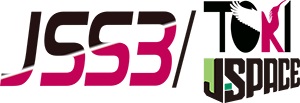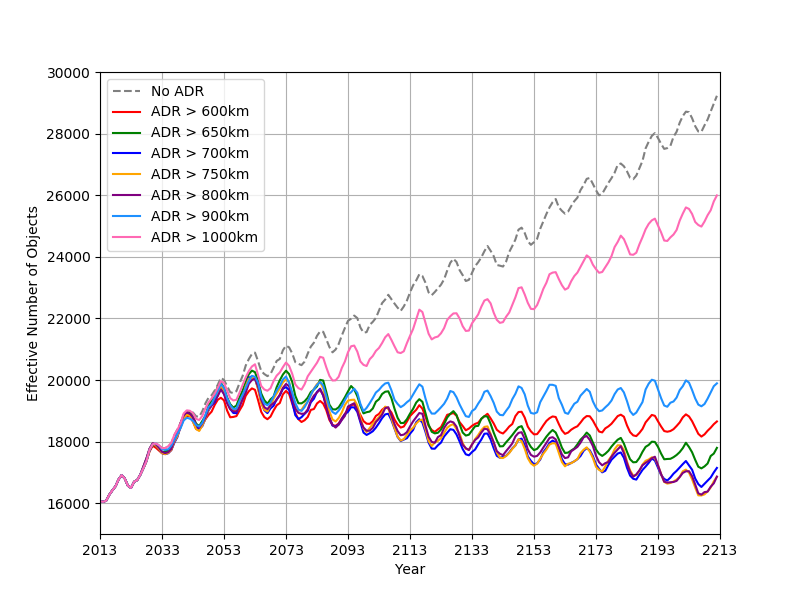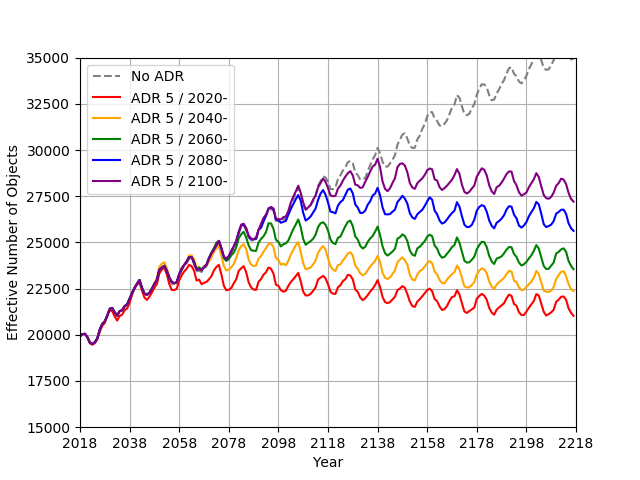Long-term orbital environment prediction by orbital debris evolutionary model
JAXA Supercomputer System Annual Report April 2019-March 2020
Report Number: R19EG3105
Subject Category: Research and Development
- Responsible Representative: Hiroyuki Sugita, Research and Development Directorate, Research Unit II
- Contact Information: Nagaoka Nobuaki(nagaoka.nobuaki@jaxa.jp)
- Members: Satomi Kawamoto, Yasuhiro Kitagawa, Nobuaki Nagaoka
Abstract
Increase of space debris is a problem for reliability of future space activity. JAXA has researched space debris related technology for space debris mitigation and environmental remediation. The guidelines for countermeasures of space debris are researched based on the prediction of future orbital environment using the orbital debris evolutionary model (NEODEEM) jointly developed by JAXA and Kyushu University.
Reference URL
Please refer to ‘Ensuring the safety of space missions now and in the future | JAXA | Research and Development Directorate‘.
Reasons and benefits of using JAXA Supercomputer System
NEODEEM predicts the situation of over 200 years orbital propagations of more than 20000 elements and orbital events by using Monte-Carlo method. Therefore, JSS2 is used to reduce run time and to process a large amount of data. Only SORA_PP is used for compatibility with PC version (WINDOWS).
Achievements of the Year
Study of some indices expected to be effective in reducing future orbit debris performed using NEODEEM, to evaluate the effects of various related parameters (e.g. dependency on the altitude of active debris removal (ADR) object (Figure 1) , ADR starting time (Figure 2), and dependency on disposal altitude and speed).
The impact on the orbital environment by mega-constellation system in which a huge number of satellites are placed in orbit is also evaluated.
These results are used as a basis for evaluating the effectiveness of countermeasures of debris mitigation and discussing international rules.
Publications
– Non peer-reviewed papers
1)Kawamoto, S., Nagaoka, N., Sato, T., and Hanada, T, “Impact on Collision Probability by Post Mission Disposal and Active Debris Removal”, The First International Orbital Debris Conference (IOC) 2019.
2)Kawamoto, S., Nagaoka, N., Hanada, T., Abe, S. “Evaluation of Active Debris Removal Strategy Using a Debris Evolutionary Model”, 70th International Astronautical Congress (IAC) 2019.
Usage of JSS2
Computational Information
- Process Parallelization Methods: Assigning Monte-Carlo runs with same initial conditions to multiple cores
- Thread Parallelization Methods: N/A
- Number of Processes: 10
- Elapsed Time per Case: 60 Hour(s)
Resources Used
Fraction of Usage in Total Resources*1(%): 0.25
Details
Please refer to System Configuration of JSS2 for the system configuration and major specifications of JSS2.
| System Name | Amount of Core Time(core x hours) | Fraction of Usage*2(%) |
|---|---|---|
| SORA-MA | 0.00 | 0.00 |
| SORA-PP | 691,812.13 | 4.48 |
| SORA-LM | 0.00 | 0.00 |
| SORA-TPP | 0.00 | 0.00 |
| File System Name | Storage Assigned(GiB) | Fraction of Usage*2(%) |
|---|---|---|
| /home | 19.07 | 0.02 |
| /data | 190.73 | 0.00 |
| /ltmp | 3,906.25 | 0.33 |
| Archiver Name | Storage Used(TiB) | Fraction of Usage*2(%) |
|---|---|---|
| J-SPACE | 0.01 | 0.00 |
*1: Fraction of Usage in Total Resources: Weighted average of three resource types (Computing, File System, and Archiver).
*2: Fraction of Usage:Percentage of usage relative to each resource used in one year.
JAXA Supercomputer System Annual Report April 2019-March 2020




